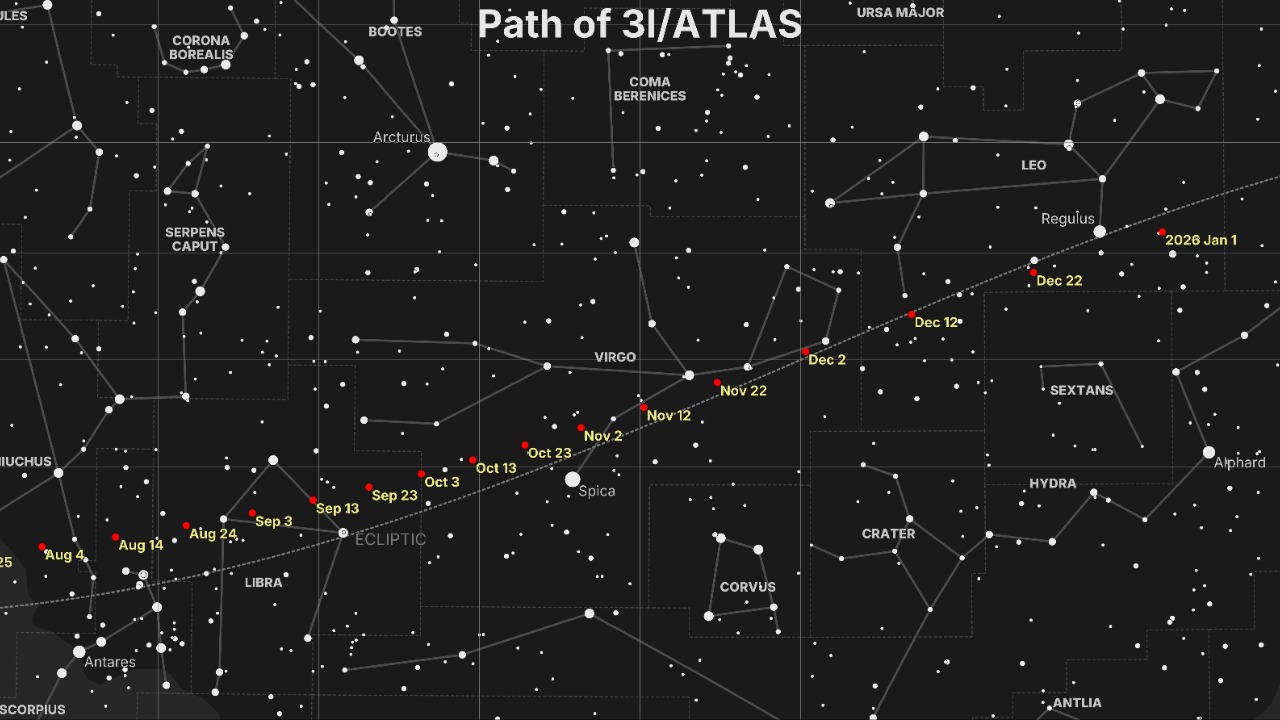
The interstellar comet 3I/ATLAS has unveiled a growing tail, a significant development after it initially showed no comet tail. This revelation follows an earlier alarm raised by a Harvard scientist who described the object’s size as very anomalous. Brand new images from the Virtual Telescope Project confirm the tail is getting longer, as detailed in reports from November 12 and 13, 2025.
Background on Interstellar Comet 3I/ATLAS
3I/ATLAS is an interstellar object confirmed as a comet, originating from outside our solar system. Its reappearance, referenced as “Comet 3I/ATLAS is back” in recent reporting, has sparked renewed interest in this celestial visitor. As the third interstellar object detected, 3I/ATLAS provides a rare opportunity to study these infrequent visitors from beyond our solar system.
Initial Lack of Visible Tail
On November 10, 2025, global trends coverage reported that interstellar object 3I/ATLAS showed no comet tail. This absence prompted scientific scrutiny and led to concerns about its behavior. During this period, the object’s trajectory and approach toward the inner solar system were closely monitored.
Harvard Scientist’s Alarm Over Anomalous Size
A Harvard scientist sounded an alarm after 3I/ATLAS showed no comet tail, stating “its size is very anomalous”. This size anomaly has significant implications for interstellar object studies, potentially indicating unusual properties or risks associated with 3I/ATLAS. These early observations have fueled ongoing research into this intriguing object.
New Images Capturing Tail Growth
A new image captured on November 12, 2025, shows that 3I/ATLAS’s tail is still growing. A separate new photo from the same day reveals 3I/ATLAS comet has grown a longer tail. These findings are further supported by a report on November 13, 2025, revealing 3I/ATLAS’s tail is growing.
Role of the Virtual Telescope Project
The Virtual Telescope Project has played a crucial role in observing 3I/ATLAS. On November 12, 2025, the project contributed brand new images showing the tail getting longer. The project’s methods for remote observation of 3I/ATLAS have provided public access to real-time data on the comet’s evolution.
Implications for Interstellar Object Research
The growing tail of 3I/ATLAS changes our understanding of its composition and activity. This tail development helps resolve earlier anomalies like the lack of tail and size concerns raised on November 10, 2025. These observations could have future impacts on studies of interstellar visitors, providing valuable insights into their behavior and properties.
Observing 3I/ATLAS in the Coming Weeks
Following the recent tail growth, visibility and trajectory updates for 3I/ATLAS are expected. Amateur astronomers can use various tools or events to track the comet. Ongoing monitoring efforts tied to the new images and scientist’s input will continue to provide valuable data on this interstellar visitor.
More from MorningOverview